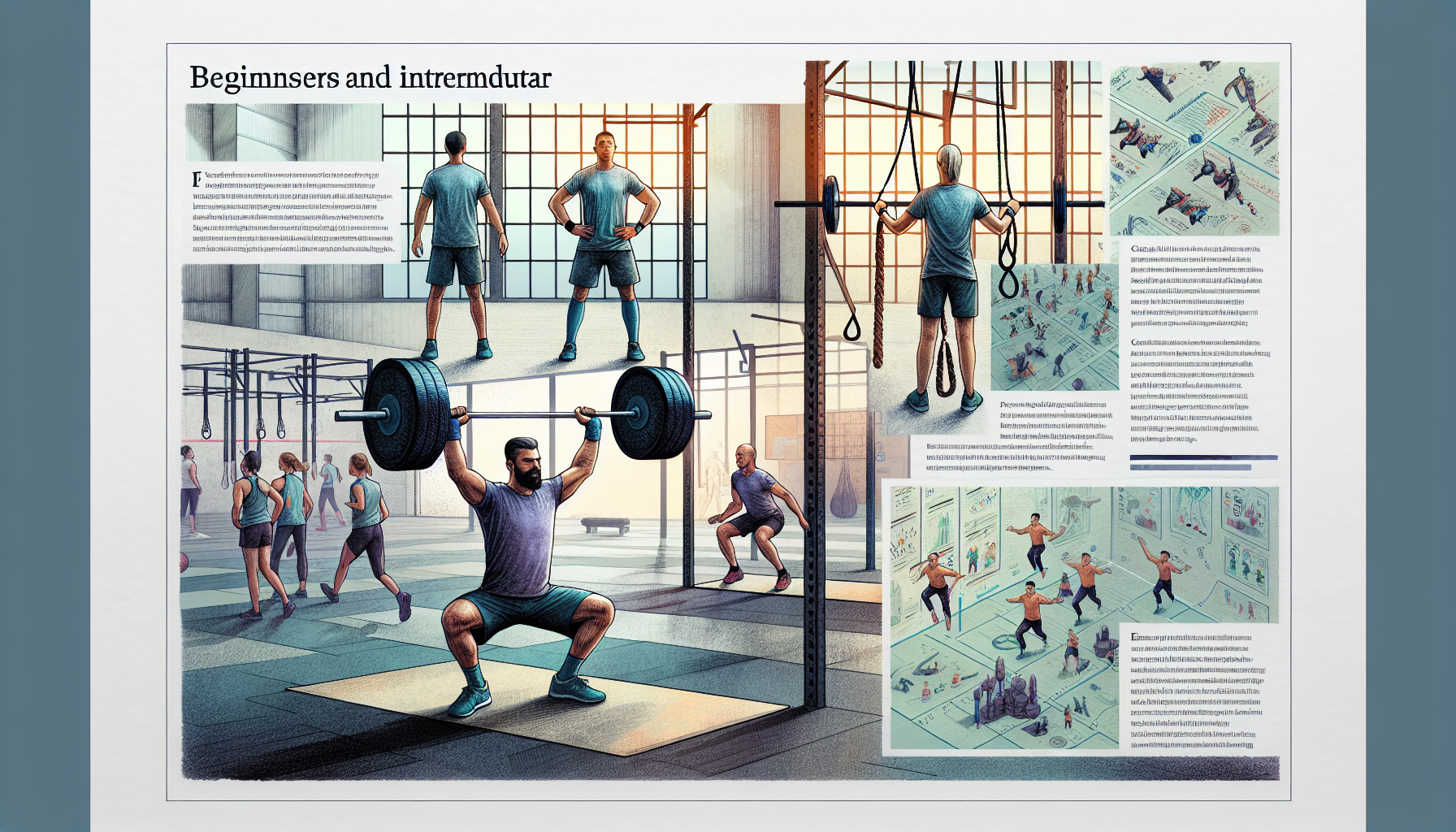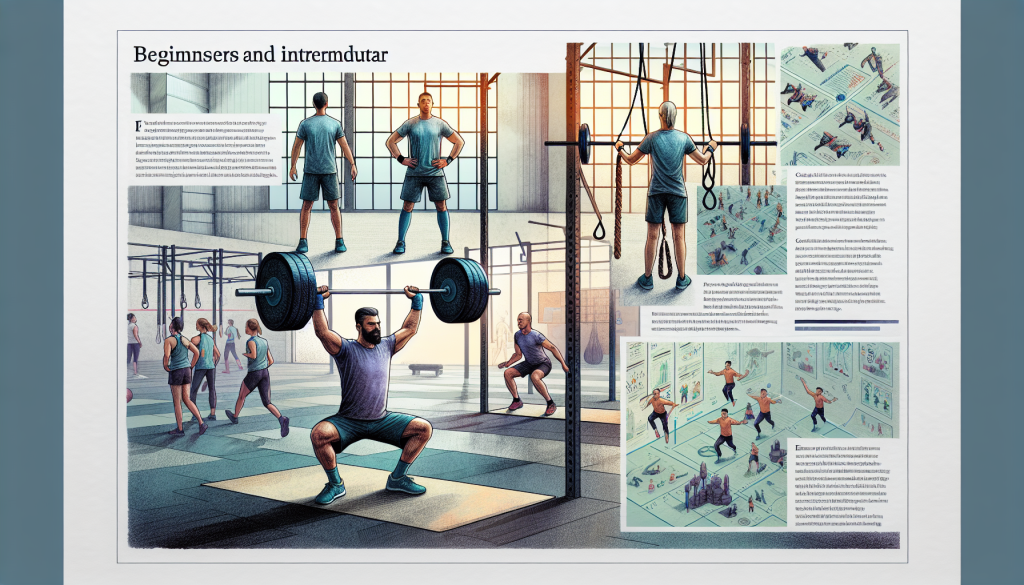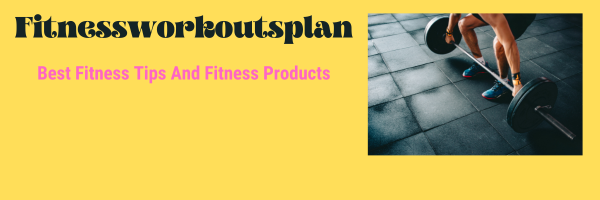CrossFit Workouts For Beginners And Intermediate Athletes

If you’ve ever wanted to take your fitness to the next level, CrossFit is the perfect way to do it. Whether you’re a beginner looking to dip your toes into this high-intensity training or an intermediate athlete seeking a new challenge, CrossFit workouts offer a dynamic and effective approach to fitness. With a combination of functional movements, intense cardiovascular exercise, and strength training, CrossFit is designed to push your limits and help you achieve your fitness goals. In this article, we’ll explore some of the best CrossFit workouts for beginners and intermediate athletes, providing you with the tools and motivation to embrace this exciting fitness journey.

CrossFit Workouts For Beginners
Choosing the Right Workout Program
When starting CrossFit as a beginner, it is important to choose the right workout program. Look for a program that is specifically designed for beginners, as it will gradually introduce you to the intensity and movements of CrossFit. Consider factors such as your current fitness level, any previous injuries or limitations, and your personal goals. It’s also helpful to find a gym or coach who can guide you through the workout program and provide proper instruction and form corrections.
Setting Realistic Goals
Setting realistic goals is crucial in any fitness journey, and CrossFit is no exception. As a beginner, it’s important to set goals that are attainable and sustainable. Start by focusing on mastering the basic movements and gradually increasing your strength and conditioning. Whether your goal is to lose weight, improve performance in other sports, or simply become fitter and healthier, having a clear vision and setting specific, measurable, achievable, relevant, and time-bound (SMART) goals will keep you motivated and on track.
Warming Up and Stretching
Prior to every CrossFit workout, make sure to warm up your body and stretch properly. A proper warm-up will increase your body temperature, improve blood circulation, and prepare your muscles and joints for the upcoming workout. Incorporate dynamic stretches and mobility exercises that target the major muscle groups and areas of tightness. This will help to prevent injuries and improve your overall performance during the workout.
Bodyweight Exercises
Bodyweight exercises are the foundation of CrossFit and are perfect for beginners. These exercises use your own body weight as resistance, making them accessible to people of all fitness levels. Examples of bodyweight exercises include squats, push-ups, lunges, and burpees. Start with the basic variations of these exercises and gradually progress to more challenging movements as your strength and endurance improve. Bodyweight exercises are great for building functional strength, increasing flexibility, and improving overall fitness.
Introduction to Weightlifting
Weightlifting is a fundamental aspect of CrossFit and can greatly enhance your overall fitness and strength. As a beginner, it’s important to start with proper form and technique before adding heavy weights. Focus on learning the correct movement patterns and gradually increase the weights as you become more comfortable. Squats, deadlifts, and overhead presses are common weightlifting movements in CrossFit. Learning proper weightlifting technique will not only help you build strength but also prevent injuries.
Interval Training
Interval training is a key component of CrossFit workouts and involves alternating between periods of high-intensity exercise and active recovery. This type of training is highly effective for improving cardiovascular fitness and burning calories. As a beginner, start with shorter intervals and gradually increase the intensity and duration as your fitness level improves. Examples of interval training in CrossFit include sprints, rowing intervals, and cycling bursts. Interval training not only improves your endurance but also pushes you out of your comfort zone.
Incorporating Cardiovascular Exercises
Cardiovascular exercises play a crucial role in CrossFit workouts and are essential for improving your overall fitness and endurance. Activities such as running, cycling, swimming, and rowing can be incorporated into your training program to challenge your cardiovascular system. As a beginner, focus on steady-state cardio exercises to gradually build your endurance. You can also include high-intensity cardio intervals to improve your anaerobic capacity. Mixing different cardiovascular exercises will not only keep your workouts interesting but also target different muscle groups.
Building Core Strength
Core strength is the foundation for all movements in CrossFit, and it plays a key role in stabilizing your spine and improving overall athletic performance. As a beginner, focus on exercises that target the abdominal muscles, lower back, and hips. Planks, Russian twists, and leg raises are some examples of core exercises to incorporate into your workouts. Building a strong core will not only improve your stability and balance but also help prevent injuries.
Mobility and Flexibility Training
Mobility and flexibility training are often overlooked but are essential for optimal performance and injury prevention in CrossFit. As a beginner, prioritize stretching and mobility exercises to improve your range of motion, joint stability, and overall flexibility. Incorporate exercises that target specific areas of tightness or restriction, such as hip openers, shoulder stretches, and spinal mobility drills. Regular mobility and flexibility training will not only enhance your performance but also help you move more efficiently and reduce the risk of injury.
Recovering and Rest Days
Recovery and rest days are just as important as the actual workouts in CrossFit. It is during these periods that your body repairs and adapts, allowing you to come back stronger for your next workout. As a beginner, listen to your body and give yourself enough time to recover between workouts. Incorporate rest days into your training schedule and prioritize sleep, proper nutrition, and active recovery activities such as stretching or foam rolling. Remember, recovery is essential for avoiding burnout and keeping yourself injury-free.
CrossFit Workouts For Intermediate Athletes
Progressive Training Programs
As an intermediate CrossFit athlete, it is important to follow a progressive training program that challenges you and helps you continue to advance. Look for programs that incorporate periodization, which involves dividing your training into distinct phases, each with its own focus and goals. This will allow you to build strength, improve performance, and prevent plateauing. A well-designed progressive training program will include a mix of strength training, conditioning workouts, and skill development to help you reach new levels in your CrossFit journey.
Advanced Bodyweight Movements
Once you have mastered the basic bodyweight exercises as a beginner, it’s time to progress to more advanced movements. Intermediate athletes can incorporate exercises such as handstand push-ups, muscle-ups, pistol squats, and strict pull-ups into their workouts. These movements require increased strength, coordination, and body control. Take your time to practice and perfect these advanced bodyweight movements, focusing on maintaining proper form and technique. They will not only challenge you physically but also help you build impressive body control and athleticism.
Olympic Weightlifting Techniques
Olympic weightlifting techniques, such as snatch and clean and jerk, are an integral part of CrossFit for intermediate athletes. These explosive and technical lifts require a combination of strength, power, and speed. Seek guidance from a qualified coach to learn proper weightlifting technique and progress safely. It’s important to build a strong foundation with the basic weightlifting movements before progressing to heavier weights. Olympic weightlifting techniques will not only improve your strength but also enhance your explosiveness and overall athletic performance.
High-Intensity Interval Training (HIIT)
High-intensity interval training (HIIT) continues to play a significant role in the training of intermediate CrossFit athletes. This form of training involves short bursts of intense exercise followed by short periods of rest or active recovery. Intermediate athletes can add more complex movements and increase the intensity of their intervals. Burpee box jumps, kettlebell swings, and rowing sprints are examples of HIIT workouts for intermediate athletes. As always, listen to your body and gradually increase the intensity and duration of your intervals.
Explosive Plyometric Exercises
Plyometric exercises are explosive movements that involve rapid stretching and contracting of muscles, improving power and explosive strength. Intermediate CrossFit athletes can incorporate exercises such as box jumps, power cleans, and medicine ball slams into their training routines. Make sure to start with lower heights and lighter weights before progressing to more challenging variations. Plyometric exercises not only develop power but also enhance coordination and agility, making you more efficient in all aspects of your CrossFit training.
Muscle Endurance Workouts
Muscle endurance workouts are designed to improve your ability to sustain contractions over an extended period of time. Intermediate CrossFit athletes can benefit from incorporating these workouts into their training routine. Examples of muscle endurance workouts include AMRAP (as many rounds as possible) circuits and EMOM (every minute on the minute) workouts. These workouts challenge your cardiovascular system while also building muscular endurance. Push yourself to complete as many rounds or repetitions as possible within a specific timeframe, gradually increasing the difficulty as your fitness level improves.
CrossFit Gymnastics
CrossFit gymnastics combines bodyweight movements, strength training, and skill development to improve overall athleticism and control. Intermediate athletes can incorporate gymnastics movements such as handstand walks, bar muscle-ups, and ring dips into their workouts. These movements require a strong foundation, proper technique, and body awareness. Seek guidance from a coach or take gymnastics classes to learn and progress safely. CrossFit gymnastics not only improve your body control but also provide a fun and challenging aspect to your training.
Functional Circuit Training
Functional circuit training involves combining multiple exercises into a circuit, targeting different muscle groups and movement patterns. Intermediate CrossFit athletes can benefit from incorporating functional circuit training into their workouts. This type of training helps improve overall conditioning, strength, and muscular endurance. Design circuit workouts that include a mix of compound exercises, such as squats, lunges, push-ups, and kettlebell swings. Vary the intensity, duration, and order of the exercises to keep your workouts challenging and engaging.
Endurance and Stamina Training
Endurance and stamina training is crucial for intermediate CrossFit athletes looking to excel in longer and more demanding workouts. Incorporating longer cardio sessions, such as running, cycling, or rowing, into your training routine will improve your ability to sustain effort over extended periods of time. Gradually increase the duration and intensity of your endurance workouts to challenge your cardiovascular system and build mental resilience. It’s important to find a balance between high-intensity interval training and longer endurance sessions to enhance both your anaerobic and aerobic capacity.
Competition Prep
If you’re an intermediate CrossFit athlete with aspirations of competing, it’s essential to include competition preparation in your training routine. This includes refining your skills and techniques, improving your weaknesses, and testing yourself in simulated competition settings. Seek guidance from experienced coaches or join a competitive CrossFit team to receive proper guidance and support. Competition preparation involves setting goals, analyzing and learning from previous performances, and creating a training plan that focuses on specific skills and movements required in CrossFit competitions.
CrossFit workouts for beginners and intermediate athletes provide a comprehensive guide to help you embark on your CrossFit journey. Whether you are just starting out or looking to advance to the next level, understanding the different workout programs, setting realistic goals, and incorporating a variety of exercises and movements will enhance your overall fitness and performance. Remember to listen to your body, take rest and recovery seriously, and seek guidance from qualified coaches or trainers to ensure safe and effective progression in your CrossFit training. Get ready to challenge yourself and experience the benefits of this dynamic and rewarding fitness program.
